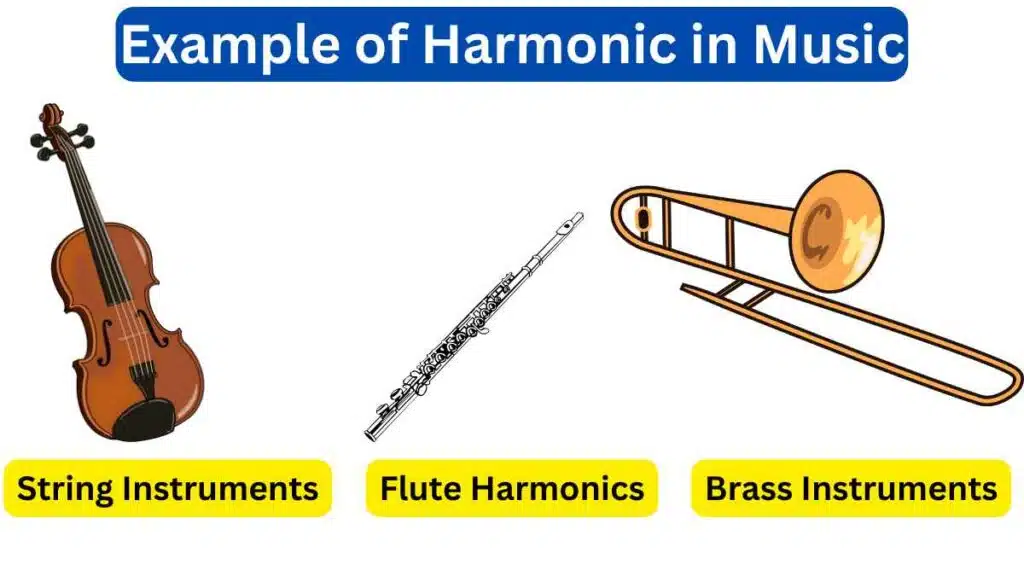10 Example of Harmonic in Music
Harmonics in music refers to overtones or higher-frequency components that accompany the fundamental frequency of a musical note or sound. Examples of harmonics in Music include string instruments and flute harmonics.
10 Example of Harmonic in Music
Here are ten examples of harmonics in music.

1. String Instruments
String instruments, like guitars, violins, and pianos, produce harmonics when a string is plucked, bowed, or struck. The different harmonics generated give each instrument its unique sound.
2. Flute Harmonics
In the flute and similar woodwind instruments, players can produce harmonics by changing their embouchure and air pressure. These harmonics are used for various musical effects.
3. Singing Harmonics
Vocalists can achieve harmonics by manipulating the shape of their vocal tract and controlling their breath. Overtones enhance the richness and complexity of vocal sounds.
4. Brass Instruments
Brass instruments, like trumpets and trombones, produce harmonics by changing the positions of their lips and altering the length of the instrument’s tubing. This allows players to create a range of notes and timbres.
5. Percussion Instruments
Some percussion instruments, like xylophones and marimbas, have overtone series that contribute to their characteristic sound. The harmonics of these instruments affect the overall tone.
6. Electronic Synthesizers
In electronic music, synthesizers can generate harmonics using waveform modulation techniques. Musicians can manipulate harmonics to create a wide variety of sounds and textures.
7. Harmonic Singing Techniques
Tuvan throat singing and overtone singing involve the skillful manipulation of the vocal tract to emphasize specific harmonics, creating multiple audible tones simultaneously.
8. Overtone Singing Styles
Various world music traditions, such as Mongolian, Tibetan, and Inuit throat singing, feature unique styles of overtone singing that produce distinct harmonic structures.
9. Pipe Organ Harmonics
Pipe organs generate harmonics through the interaction of different ranks of pipes. Organists can blend these harmonics to create a wide range of tonal colors.
10. Jazz and Blues Guitar Techniques
In jazz and blues guitar playing, techniques like bending strings and using slides can emphasize specific harmonics, producing expressive and soulful sounds.
These examples illustrate the role of harmonics in shaping the timbre and character of musical sounds across various instruments and vocal styles. Harmonics contribute to the richness and diversity of musical expression.







Leave a Reply